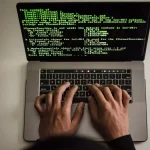In a matter of hours millions of employees across India Inc shifted work from offices to homes. So far, this has worked out well with positive outcomes like increased productivity. Yet the threat of cyber attacks looms large as the area of attack that hackers can target has increased.
There are companies like Dell Technologies which have been offering Work From Home (WFH) options for long and have experience of managing remote workforces even in pre-Covid 19 times. In an e-mail interview Alok Ohrie, President & Managing Director, Dell Technologies India discusses WFH, security issues and more. Edited excerpts:
How many of your employees are working from home at present. Do you plan to have them working from home even after lockdown is lifted?
Currently in India, our entire workforce is working from home. In fact, Dell Technologies has been championing a flexible work environment and this is part of our organization DNA. Hence, working from home given the current scenario, feels like an extension of our earlier culture, as we all have adopted technology to stay connected with our teams and customers.
We understand that the transition back to site might have challenges, but we see this as an opportunity to further reinvent and redefine work. In fact, we are now focusing on Connected Workplaces 2.0 which we believe is the future of work. We have the required infrastructure in place, and we are fully prepared to support flexible work environment on an ongoing basis.
What are the security implications of Work From Home (WFH) — with thousands of employees across various companies working from their homes?
While businesses are adapting to working remotely to ensure safety of their employees, this swift transition to new work culture has myriad implications.
One of the biggest hurdles that the organizations are facing right now is enabling employee productivity from anywhere without compromising on security. This is due to the sheer scale and magnitude of the remote work culture, which has led to an increase in the flow of mission-critical data, which itself has become a breeding ground for cyber criminals and hackers. If we look at the ecosystem around us, the number of cyber-attacks on Indian companies in the past few weeks has doubled, according to a recent PwC 2020 study.
Hence, for businesses to be in a better position to safeguard their data against external threats, they would need to keep data security at the core of all decisions. They need to start by looking at a holistic approach to security, or what we, at Dell Technologies call ‘Security Transformation’. What this means is that all businesses need to focus on security which is intelligent, automated and built in to everything, everywhere. This will enable them to take better informed decisions, which will help them deliver predictable business outcomes.
You have had to move employees from offices to homes to deliver services to your global customers. How did you mitigate risks?
For all of us at Dell Technologies, the journey of remote working started more than a decade ago. It is ingrained in our DNA. To ensure our business function remains uninterrupted, we have fully enabled all our employees to be able to meet the needs of all our customers. As Michael Dell (said – “our customers are always going to remember us for how we treated them and helped them during a crisis”. Thus, even during these current times, we are constantly engaging with our customers to understand their needs and requirements and aid them in ensuring smooth operations.
After all, a modern workforce is a connected workforce. Looking at the current situation, there is no doubt that it requires a digital workplace, personalized team member experience and simplified IT consumption all the time, to ensure complete security to mitigate any external threats.
Can WFH become a viable, long term option? If so, what will need to change to enable this?
I believe work from home can be a viable option from a long-term perspective. In fact, as earlier mentioned, remote working has been a multi-year journey for us.
What has become pertinent for organizations is to assess their current technology footprint to see if it is helping or hindering the employee work. A few tips from our experience over the past decade on remote working are – start with a strategy that puts employees first; simplify IT consumption to provide a faster way for employees to consume IT; incorporate security as an integrated part of business strategy and last but not the least, communicate consistently with employees and stakeholders.
The combination of the company’s current technology know-how including security infrastructure, as well as the HR approaches, will strike the right balance they need to help their customers and themselves in running the business smoothly.
Can enterprise grade security be offered at home? If not, why not, if yes, what will be the costs and long term risks?
Security needs to be connected to the people, processes, and technologies behind any organization. This means that any business should be able to operate securely from anywhere, irrespective of the location. What organizations need to do is to enable secure collaboration and communication tools. These tools can be used anywhere, anytime on any device and they will provide effective capabilities for conferencing and collaboration whether in the office, at home, or on the go.
We do not compromise security for ease of use. In fact, for all activities involving accessing or sharing sensitive data, we require our remote employees to use the Dell Technologies VPN when working outside of the office, even when on their home network.
The investments in these technologies and security tools do come at a certain cost. However, these will benefit the organizations in the long term, to achieve their future vision, securely.
WFH looks like an easy opportunity for hackers, data fraud etc.? How do you ensure overall security?
With remote working being enforced at a scale we have never experienced before the cybersecurity challenges have grown exponentially. Each of us has a responsibility in keeping our virtual environments secure.
It is important to follow a good security hygiene, such as keeping systems and applications up to date, always using VPN, keeping work data on work devices, updating passwords and never using the same one for multiple apps or devices.
Moreover, at Dell Technologies, the safety and well-being of our team members, customers, partners and the community in which we work and live has always been and will continue to be our top priority. Some of the steps that we undertook in this regard were activation of corporate crisis management teams (CMT) to collaborate, assess and respond to team members; mobilization of remote workforce by providing flexibility to all the employees to choose the work style that best fits their needs; educating the team members about the importance of health and safety, basis WHO guidelines and digital enablement through modern operating models with the help of cybersecurity, infrastructure and team member experience teams.
Dell Technologies followed WFH, even in pre Covid days. How did it work?
We began permitting remote working globally since 2009 with our Connected Workplace program, to give our employees the flexibility to choose the work style that best balances their professional and personal commitments. In fact, prior to this current situation, approximately a quarter of our entire workforce was already working from home.
But more than just a policy, our Connected Workplace Program was more about a change in how we think about work, where work is not anchored to one place and time and instead is focused on outcomes. This program had a positive impact on our business, our approach to talent acquisition and our environmental footprint. Moreover, in 2013, we established our 2020 goal to enable 50% of our workforce to work flexibly. However, we had already surpassed this goal with approximately 65% of our team members leveraging work flexibility in their jobs, prior to the current situation. You can also check out this bpm
software comparison to find the best software for your business.
For the latest news and updates, follow us on Google News. Also, if you like our efforts, consider sharing this story with your friends, this will encourage us to bring more exciting updates for you.







